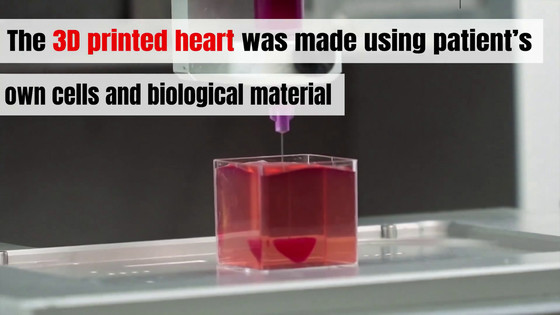Succeeded in printing a `` mini liver '' that functions like a real thing with a 3D printer and iPS cells

Although the number of transplant recipients is increasing, the number of donors who receive transplants of heart, liver, kidney, etc. from donors is increasing, but there is a problem that there is a shortage of donors who can provide transplantable organs. Meanwhile, it was announced that by using a 3D printer to output biological ink derived from
3D bioprinting of liver spheroids derived from human induced pluripotent stem cells sustain liver function and viability in vitro-IOPscience
https://iopscience.iop.org/article/10.1088/1758-5090/ab4a30
The next 3D-printing craze? It could be functioning 'mini-livers' | Inverse
https://www.inverse.com/article/61829-3d-print-liver-organs
In order to solve the problem of shortage of donors in organ transplantation, technology to create organs using 3D printers has been studied energetically in recent years, and in April 2019 an Israeli research team will output a heart with a 3D printer Has succeeded.
Succeeded in creating the heart using a 3D printer and human cells for the first time in the world-gigazine

A research team at the University of Sao Paulo, Brazil, created iPS cells from blood donated by three volunteers. After that, iPS cells were induced to become hepatocytes, and spheroids (cell mass) prepared in advance by mixing with cells other than hepatocytes were output as a biological ink with a 3D printer and cultured for 18 days. .
Criam Mini-Pesquisadores Figado Funcional Por # Impressao3D . A Tecnica, Desenvolvida Em Um CEPID-FAPESP Sediado Na #USP , Permite A Producao De Tecido Hepatico Em Apenas 90 Dias E Pode Se Tornar Uma Alternativa A # Doacaodeorgaos No Futuro. Https: // t.co/wmlc1xULx5 pic.twitter.com/et82tdomXD
— Agência FAPESP (@AgenciaFAPESP) November 19, 2019
In the following movie, you can see where the spheroid is actually output from the 3D printer.
Tecido de fígado criado em impressora 3D evita rejeição-YouTube
The following is one of the spheroids actually output, which is formed in the letters of 'USP' which is the logo of the University of Sao Paulo.

After 18 days, when the tissue was output, the research team reported that a small liver could be created. This liver has the same function as the original liver, albeit on a small scale, and seems to have maintained its function as a liver longer than a tissue made only of hepatocytes.
Ernest Grahl, a researcher at the Institute of Biological Sciences at the University of Sao Paulo and author of the paper, said that the entire process performed in this study would be completed in just 90 days, saying `` It is not a single hepatocyte, but a 3D printer. By constructing spheroids before doing this, we have achieved greater success than conventional 3D bioprinting for organ generation. '
Mr. Graal also argued that the technology would help provide a liver for transplantation, saying, `` We did 3D printing of the liver at a small experimental level, but this technology has investment and interest. If you can, you can easily scale up. '
Related Posts:
in Science, Posted by log1i_yk







